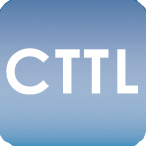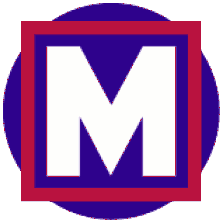The Mechanics of new media (science) writing
Articulation, Design, Hospitality, and Electracy
Nathaniel A. Rivers, Christopher Grabau, Katherine Kavanaugh, and Katie Zabrowski
References
Ambrose, Susan. (2010). How learning works. San Francisco, CA: Jossey-Bass.
Articulation. (2012). In OED Online. Retrieved February 13, 2012, from http://www.oed.com/
Bandura, Albert. (1977). Social learning theory. Englewood Cliffs, NJ: Prentice Hall.
Barr, Robert B., & Tagg, John. (1995). From teaching to learning: A new paradigm for undergraduate education. Change, 27(6), 13–25.
Bay, Jennifer, & Rickert, Thomas. (2008). New media and the fourfold. JAC, 28(1-2), 209–244.
Brooke, Collin G. (2009). Lingua fracta: Toward a rhetoric of new media. Cresskill, NJ: Hampton Press.
Bushnell, Jack. (2003). Writing through science. Technical Communication Quarterly, 12(30), 251–266.
Cgu.edu. (2014). Mihaly Csikszentmihalyi. Retrieved February 10, 2014, from http://www.cgu.edu/pages/4751.asp
Clarke, Emerson, & Root, Vernon. (1972). Your future in technical and science writing. New York, NY: Rosen Press.
Csikszentmihalyi, Mikhaly. (1990). Flow: The psychology of optimal experience. New York, NY: Harper & Row.
Dawkins, Richard. (2008). Introduction. In Richard Dawkins (Ed.), The Oxford book of modern science writing (pp. xvii-xviii). New York, NY: Oxford University Press.
DeVoss, Dánielle Nicole, Cushman, Ellen, & Grabill, Jeffrey T. (2005). Infrastructure and composing: The when of new-media writing. College Composition and Communication, 57(1), 14–44.
Driscoll, Marcy P. (2002). How people learn (and what technology might have to do with it). Retrieved July 9, 2013, from http://www.ericdigests.org/2003-3/learn.htm
Emily. (2010). A living elements of style. ScienceWriters 2010. Retrieved April 21, 2013, from http://sciencewriters2010.blogspot.com/2010/11/living-elements-of-style_06.html
Ferree, Myra M., Gamson, William A., Gerhards, Jürgen, & Rucht, Dieter. (2002). Shaping abortion discourse: Democracy and the public sphere in Germany and the United States. New York, NY: Cambridge University Press.
Ferris, Timothy. (2001). Introduction. In Timothy Ferris (Ed.), The best American science writing 2001 (pp. vii–xi). New York, NY: Ecco Press.
Fioravanti, Carlos, & Velho, Lea. (2010). Let’s follow the actors! Does actor-network-theory have anything to contribute to science journalism? Journal of Science Communication, 9(4), 1–8.
Fm3buddhamachine.com. (2014). Buddha machine!. Retrieved February 10, 2014, from http://www.fm3buddhamachine.com/v2/
Gannon, Robert. (1991). Best science writing: Readings and insights. Phoenix, AZ: Oryx Press.
Hall, Stuart. (1985). Signification, representation, ideology: Althusser and the poststructuralist debates. Critical Studies in Communication, 2(2), 91–114.
Hall, Stuart. (1986). On postmodernism and articulation: An interview with Stuart Hall. Journal of Communication Inquiry, 10(2), 45–60.
Harkin, Patricia. (1998). Rhetorics, poetics and cultures as an articulation project. Journal of Advanced Composition, 17(3), 494–497.
Haswell, Janis, Haswell, Richard, & Blalock, Glenn. (2009). Hospitality in college composition courses. College Composition and Communication, 60(4), 707–727.
Johnson-Eilola, Johndan. (1997). Nostalgic angels: Rearticulating hypertext writing. Norwood, NJ: Ablex Publishing Corp.
Johnson-Eilola, Johndan. (2004). The database and the essay. In Anne Frances Wysocki, Johndan Johnson-Eilola, Cynthia L. Selfe, & Geoffrey Sirc (Eds.), Writing new media: Theory and applications for expanding the teaching of composition (pp. 199–236). Logan: Utah State University Press.
King, Alison. (1993). Making a transition from "sage on the stage" to "guide on the side." College Teaching, 41, 30–35.
Knowledge. (2013). In OED Online. Retrieved August 18, 2013, from http://www.oed.com/
Latour, Bruno. (1987). Science in action. Cambridge, MA: Harvard University Press.
Madrigal, Alexis C. (2012, January 17). How “Radiolab” is changing the sound of the radio. The Atlantic. Retrieved April 21, 2013, from http://www.theatlantic.com/technology/archive/2012/01/how-radiolab-is-changing-the-sound-of-the-radio/251509/
Morris, Meaghan. (1997). A question of cultural studies. In Deryck M. Schreuder (Ed.), The humanities and a creative nation: Jubilee essays (pp. 137–159). Canberra: Australian Academy of the Humanities.
The National Association of Science Writers. (2013). About the national association of science writers. National Association of Science Writers. Retrieved April 1, 2013, from http://www.nasw.org/about-national-association-science-writers-inc
Nelkin, Dorothy. (1987). Selling science: How the press covers science and technology. New York, NY: W. H. Freeman.
Nisbet, Matthew, & Mooney, Chris. (2007). Framing science. Science, 316, 56.
Ong, Walter. (2002). Orality and literacy (2nd ed.). New York, NY: Routledge.
Pauwels, Luc. (2006). Visual cultures of science: Rethinking representational practices in knowledge building and science communication. Hanover, NH: Dartmouth College Press.
Pew Research Center. (2008). Internet overtakes newspapers as news outlet. The Pew Research Center. Retrieved August 18, 2013, from http://www.people-press.org/2008/12/23/internet-overtakes-newspapers-as-news-outlet/
Rice, Jeff, & O'Gorman, Marcel. (Eds.). (2008). New media/new methods: The academic turn from literacy to electracy. Anderson, SC: Parlor Press.
Rice, Jennifer Edbauer. (2008). Rhetoric's mechanics: Retooling the equipment of writing production. College Composition and Communication, 60(2), 366–387.
Russell, Bertrand. (1998). Knowledge by acquaintance and knowledge by description. In The problems of philosophy (pp. 25–32). Oxford, England: Oxford University Press.
Sacks, Oliver. (2003). Introduction. In Oliver Sacks (Ed.), The best American science writing 2003 (pp. vii–xi). New York, NY: Ecco Press.
Shen, Benjamin S. P. (1975). Science literacy: Public understanding of science is becoming vitally needed in developing and industrialized countries alike. American Scientist, 63(3), 265–268.
Slack, Jennifer Daryl. (1989). Contextualizing technology. In Brenda Dervin, Lawrence Grossberg, Barbara J. O’Keefe, and Ellen Wartella (Eds.), Rethinking communication Vol. 2 (pp. 329–345). London, England: Sage Publications.
Slack, Jennifer Daryl. (1996). The theory and method of articulation in cultural studies. In David Morley and Kuan-Hsing Chen (Eds.), Stuart Hall: Critical dialogues in cultural studies (pp. 112–127). London, England: Routledge.
Slack, Jennifer, Miller, David J., & Doak, Jeffrey. (1993). The technical communicator as author: Meaning, power, and authority. Journal of Business and Technical Communication, 7(1), 12–36.
Slu.edu. (2014a). Ignatian pedagogy overview: Saint Louis University center for transformative teaching learning. Retrieved February 10, 2014, from http://www.slu.edu/cttl/resources/ignatian-pedagogy
Slu.edu. (2014b). The learning studio: Saint Louis University center for transformative teaching learning. Retrieved February 10, 2014, from http://slu.edu/cttl/teaching-innovations/learning-studio
Slu.edu. (2014c). Reinert center for transformative teaching and learning: Saint Louis University center for transformative teaching learning. Retrieved February 10, 2014, from http://www.slu.edu/cttl
Statement of Practice CTTL Instructional Design Team. (2013). Saint Louis: Reinert Center for Transformative Teaching and Learning. Retrieved February 10, 2014, from http://slu.edu/Documents/cttl/ITF/Instructional_Design_Statement_v3.pdf
Tamm, Eric. (1989). Brian Eno. Boston, MA: Faber and Faber.
Weimer, Maryellen. (2013). Learner-centered teaching: Five key changes to practice (2nd ed.). San Francisco, CA: Jossey-Bass.
“Who Are Science Writers?” (n.d.). Council for the advancement of science writing. Retrieved April 21, 2013, from http://casw.org/casw/who-are-science-writers
Yore, Larry D., & Treagust, David F. (2006). Current realities and future possibilities: Language and science literacy—Empowering research and informing instruction. International Journal of Science Education, 28(2-3), 291–314.
Back to Webtext
Authors
![]() Nathaniel A. Rivers (@sophist_monster)
Nathaniel A. Rivers (@sophist_monster)
Nathaniel Rivers is an assistant professor of English at Saint Louis University. His current research addresses new materialism's and object-oriented ontology's impacts on public rhetorics such as environmentalism and urban design. He is at work on a book project currently titled The Strange Defense of Rhetoric and an edited collection exploring the impact of Bruno Latour on rhetoric and composition. His work has appeared in College Composition and Communication, Kairos, Technical Communication Quarterly, Rhetoric Review, Journal of Technical Writing and Communication, Enculturation, Janus Head, O-Zone, and Present Tense. He blogs at pure_sophist_monster.
 Christopher Grabau (@cgrabauID)
Christopher Grabau (@cgrabauID)
As a member of the instructional design team in the Reinert Center for Transformative Teaching and Learning (CTTL), Chris consults with faculty, graduate students, and teaching staff on instructional elements, course design, and learning technologies. He also researches new pedagogical approaches to instruction; helps to facilitate intentional transitions to online teaching; and works with faculty teaching in the CTTL's Learning Studio.
 Kate Kavanaugh
Kate Kavanaugh
Kate Tschida Kavanaugh is a masters degree graduate from Saint Louis University. Her emphasis was in Rhetoric and Composition, particularly technical communication. Kate currently works as a business consultant with technology consulting company, Perficient.
 Katie Zabrowski (@katethegrater)
Katie Zabrowski (@katethegrater)
Katie Zabrowski is a doctoral student in rhetoric and composition at Saint Louis University. Her interests in complex vitalism, new materialism and object-oriented ontology guide her thinking in rhetoric, composition, and writing pedagogy. Her current research explores hospitality at the level of ontology, tracing the activity of generosity and relationality at the ontological, disciplinary, and institutional levels.
Acknowledgements
The Students of ENGL 401, Jenny Bay, Collin Brooke, Jeff Rice, Jenny Rice, and Thomas Rickert
A special thanks to these classmates and colleagues for sharing their voices. The project is a fuller articulation because of them.
 Reinert Center for Transformative Teaching and Learning
Reinert Center for Transformative Teaching and Learning
Special thanks to the CTTL for providing all the institutional, instructional, and infrastructural support for the course. Nathaniel would also like to thank the CTTL for the Innovative Teaching Fellowship (Spring 2012) that provided a course release to develop the New Media Science Writing course.
 Firecracker Press
Firecracker Press
We'd like to thank Firecracker Press for welcoming us into their shop to shoot video, take pictures, and talk new (and old) media. Their work is inspirational and their attunement to process is impressive.
 Magnolia Summer
Magnolia Summer
We'd like to thank the band Magnolia Summer for allowing us to use their track "Door of Return" throughout the video. Their sound is a valuable part of this project.
 Metro Transit St. Louis
Metro Transit St. Louis
Thanks also to Metro Transit of St. Louis for providing the sites and sounds of trains. Thanks in particular to the DeBaliviere/ Forest Park Station.
Buddha Machine
Christopher's podcast makes use of sounds produced by the fabulous Buddha Machine: devices designed to work together to create ambient sounds. In addition to appearing in Christopher's podcast, the idea of the Buddha Machine became a part of the brainstorming associated with this course.
iLife Suite
Except where noted in the transcripts, sound effects and music loops are from GarageBand and/or iMovie.
XStockvideo
Several video clips in "Articulation" were downloaded from XStockvideo, which provides free to download and free to use stock video footage.